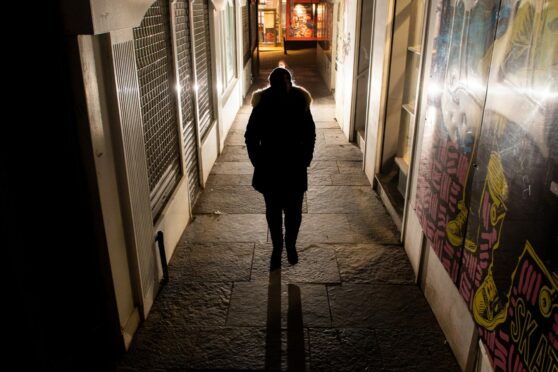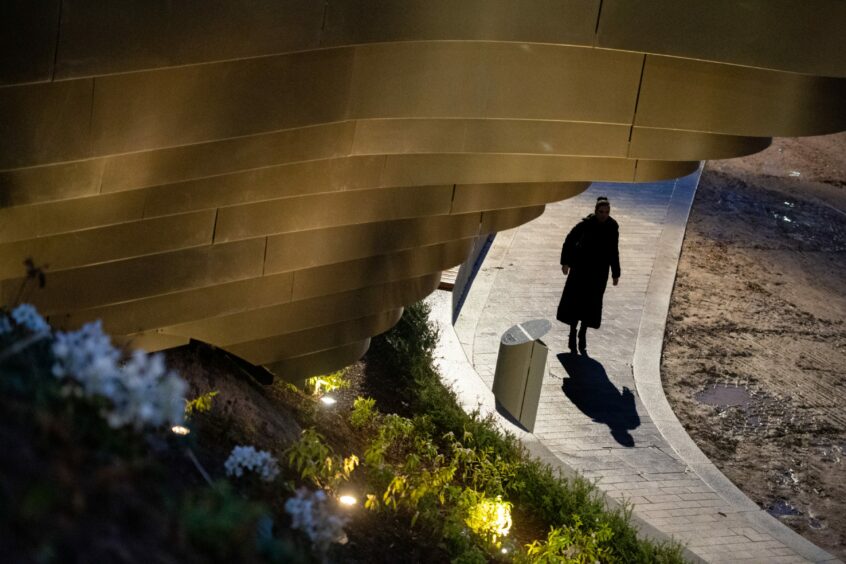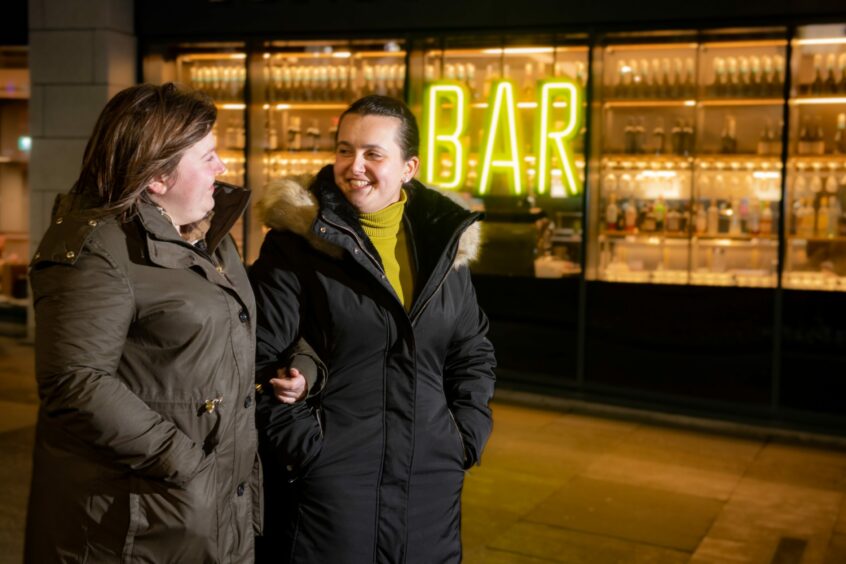Most people in Aberdeen are not reporting attacks on their personal safety because they don’t believe any action will be taken, a new survey has suggested.
The Press and Journal questionnaire has revealed frightening figures showing the shocking number of people who’ve suffered violations of their own personal safety.
They included incidents as serious as sexual assault and rape but even more concerning is how few of the victims have felt the confidence to report their ordeals.
And it’s also emerged that horrific crimes may be going unpunished because so many of those on the receiving end of disturbing behaviour don’t trust the police.
Survey respondents have shared their harrowing experiences of going out in Aberdeen, revealing where they feel most at risk and why.
‘You feel you can’t approach police’
One Aberdeen woman claimed she has repeatedly sought help from police while being sexually harassed by drunk revellers on nights out but they “shrugged” and told her to “ignore them or go home”.
Lauren, 37, spoke of her experiences after taking part in our survey that asked recent visitors to Aberdeen and residents how safe they feel going out in the city.
She said: “I approached an officer when I was being harassed and he said, ‘Ignore them or leave the premises and go home’ – no help whatsoever.
“It was quite a while ago on Belmont Street. There was a lot of alcohol involved. I approached an officer and he basically shrugged like, ‘What do you expect?’
“I got no real help and he walked off. It makes you feel like you can’t really approach the police. They’re looking for people starting fights not to help people and prevent things.
Lauren, who has previously been grabbed between her legs from behind at bars, recalled an occasion when a group of men were causing concern for her and the friends she was with.
“It got to the stage that they weren’t taking no for an answer,” she said.
“The minute they started hearing ‘No’, then came all the abuse, the name calling, the shaming and things like that.
“I approached a police officer to say these guys are being rowdy, they’re becoming more aggressive and he asked if I had said anything to the bouncer.
“The bouncer didn’t do anything either. You’re made to feel like it’s your own fault for being out in town unaccompanied. It’s not the 1920s anymore.
“I don’t need someone to hold my hand going into town.”
Disturbing behaviour making people feel unsafe
The Press and Journal’s safety survey was carried out by DC Thomson’s in-house Insight team and took place online between December 9 2022 and January 3 2023.
Survey data from 452 residents or regular visitors to Aberdeen – nearly 63% identifying as female and just over 34% male – has uncovered a worrying number of people who’ve experienced disturbing behaviour, most commonly in the city centre.
Of those who said they suffered incidents – from catcalling and wolf-whistling (57%) to receiving sexual comments/jokes (58.5%), unwelcome sexual advances (45.7%) or unwanted touching (40.7%) and even sexual assault or rape (17.2%) – 58.7% said that they occurred in hospitality settings including pubs, clubs and restaurants.
A total of 77 people (22.8%) also revealed that their drinks have been spiked.
But, on average, only 11.1% of incidents were actually reported.
In the most serious of cases – those involving sexual assault or rape – despite 58 respondents (17.2%) experiencing sex attacks, fewer than a quarter (only 14 people, 24.1%) reported them. In cases of being leered/stared at, only 1.3% of respondents reported them.
Of those who didn’t report any type of incident, more than two-thirds (67.4% – 71% female, 60.2% male) said they “didn’t feel any action would be taken” and nearly a quarter (22.5% – 17.5% female, 30.6% male) claimed to “not trust the police”.
But more than a third of respondents (37.7% – 37.5% female, 38.8% male) had previously contacted police over concerns for their own safety.
However, 62.3% of them were “not all that satisfied” and “not at all satisfied” with their interaction with the police.
‘I reported it to the police’
One woman, who wanted to remain anonymous, praised the police after she was followed up George Street in Aberdeen.
“I reported it to the police,” she said, adding: “The officer who spoke to me was very understanding.
“He was patient and visited me at my place of work to interview me after I went to the station and waited a while, as there were no officers available to interview me.”
But not all the feedback has been complimentary.
‘Nothing gets done’
A man – who experienced assault, verbal abuse, and threats – said he hadn’t reported them “because nothing gets done”.
Another anonymous female respondent said that she had reported an incident to police but there was “no action taken”.
She explained: “They didn’t look to contact the venue for possible CCTV evidence until seven weeks after the incident. By that point, it was gone”.
The Press and Journal launched an online questionnaire in December last year to investigate participants’ confidence in public safety across Aberdeen.
It went live a month after hundreds of activists marched through the city centre, claiming more needs to be done to protect women from violence.
Data from the P&J survey has since revealed that the majority of respondents feel most vulnerable when they’re alone in Aberdeen city centre after dark.
It also showed that a staggering 90% of women feel that simply being a woman affects their personal safety in Aberdeen, compared with just over a quarter of men (27.3%).
Approximately seven in 10 survey participants (70.4%) – 69.4% female, 75.0% male – also quoted a lack of visible police presence as a cause of feeling unsafe.
And among the top suggestions to improve women’s safety in Aberdeen, were 71.2% of respondents – 71.5% female, 75% male – calling for an increased police presence.
Reporting incidents should also be made easier, 45.3% of those polled – 49.8% female, 35.9% male – told the survey.
Police Scotland said that it “welcomes all feedback and insights” but, responding to the Press and Journal’s safety survey figures, the force pointed to its own surveys.
‘We have made progress, we want to do more’
Superintendent Neil McDonald, of the north-east division, said: “Recent responses from communities in the north-east highlighted that 70% of respondents were satisfied they received an appropriate response from the police, 84% expressed satisfaction with the way officers treated them, while 77% of people said they trusted the police.
“We have made progress but we want to do more to support the rights of women and girls to feel safe and we know how important the role of policing is in making this a reality.
“We also thoroughly investigate all sexual crime that is reported to police, providing support to those in need and ensuring those responsible face justice.
‘Reports of sexual offences increasing’
He added: “Reporting of sexual offences is increasing year-on-year and we continue to receive a significant volume of non-recent crime reports.
“We want and encourage victims of sexual crime to come forward and I have no doubt that these increases reflect the trust victims have in police.
“Police services across the UK are under intense scrutiny and we are realistic about the challenges ahead.
“However, I can provide every assurance that keeping people safe is at the heart of what Police Scotland does.”
If you would like to discuss the findings of our survey or share your own experiences please email our reporter Bryan Rutherford at bryan.rutherford@pressandjournal.co.uk.
Read more from our series
Credits
Words by Bryan Rutherford
Insight by DC Thomson IDA team
Data visualisations by Emma Morrice
Images by Kami Thomson
SEO by Jamie Cameron



